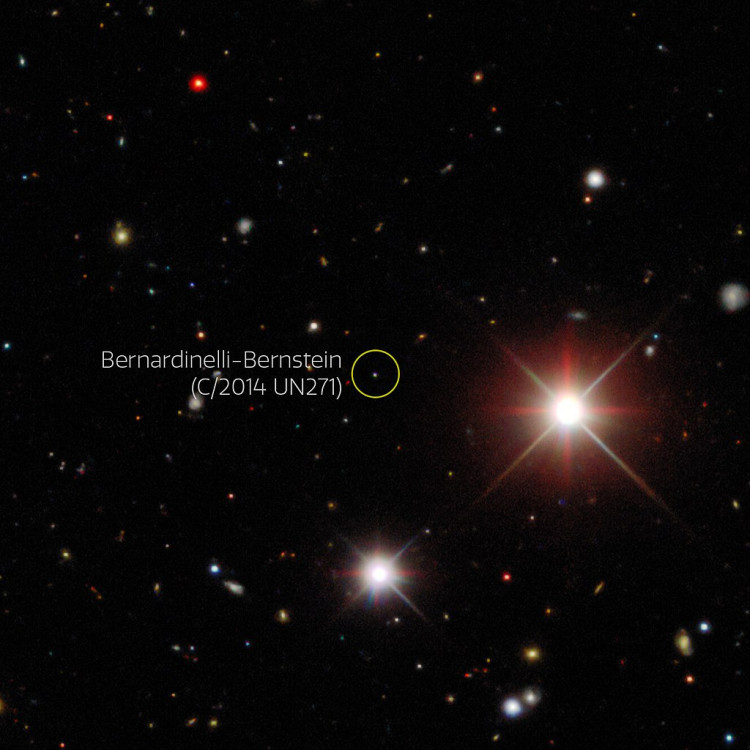A new study released on the preprint server arXiv.org announces a gigantic comet - potentially the largest ever spotted - is barreling toward the inner solar system, with an estimated arrival time of 10 years from now.
The Bernardinelli-Bernstein comet (or C/2014 UN271) is at least 62 miles (100 kilometers) across, making it 1,000 times larger than a regular comet. According to a statement announcing the comet's discovery in June 2021, it is so massive that astronomers previously mistook it for a dwarf planet.
However, a closer look revealed that the object was speeding through the Oort cloud, a gigantic scrapyard of frozen rocks billions of miles from Earth. The object appeared to be heading our way, with a bright tail, or "coma," behind it, indicating that it was an icy comet approaching the relatively warm inner solar system.
Researchers have now researched the enormous comet in greater depth, and they have revised their predictions for its path toward the sun.
To begin with, the massive rock presents no threat to Earth. Bernardinelli-Bernstein (BB) is currently cruising through the Oort cloud at a distance of around 29 times the Earth-Sun distance, or 29 astronomical units (AU).
Researchers said the comet's closest approach to Earth will take place in the year 2031, when it will swoop within 10.97 AU of the sun, putting it just outside of Saturn's orbit.
While the comet will be too far away for humans to see without telescopes, it will be much closer than the rock's last visit to our region of the solar system. The study's authors calculated that comet BB made its closest approach to the solar system 3.5 million years ago, getting within 18 AU of the sun.
The comet has gone as far as 40,000 AU away, deep into the mysterious Oort cloud, researchers said.
Scientists have plenty of time to study the massive comet as it soars ever closer to Earth over the next decade. Getting a closer look at the rock could help scientists understand a bit more about the chemical composition of the early solar system, as comets from deep in the Oort cloud are thought to be relatively unchanged since they were booted away from the sun billions of years ago.




